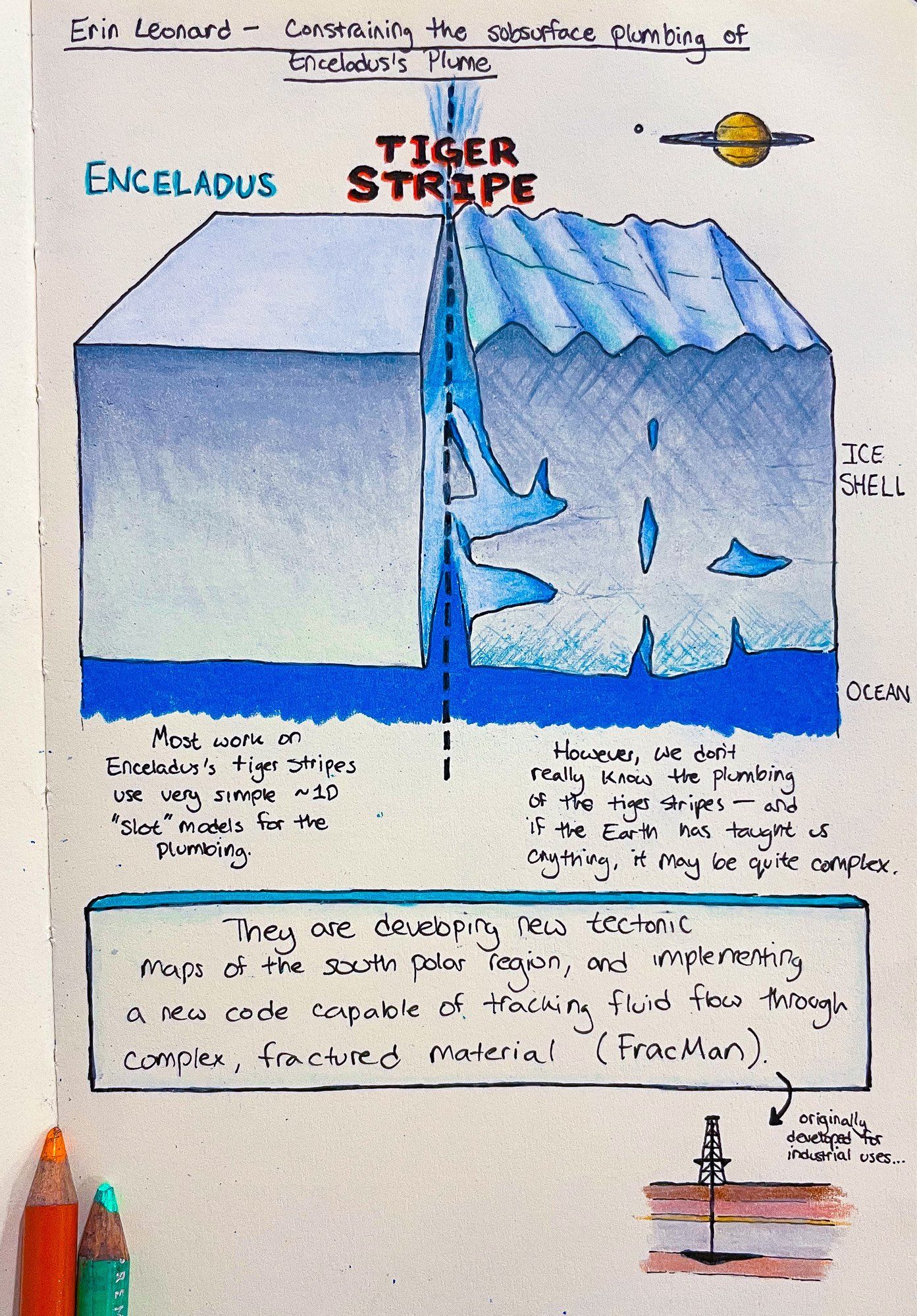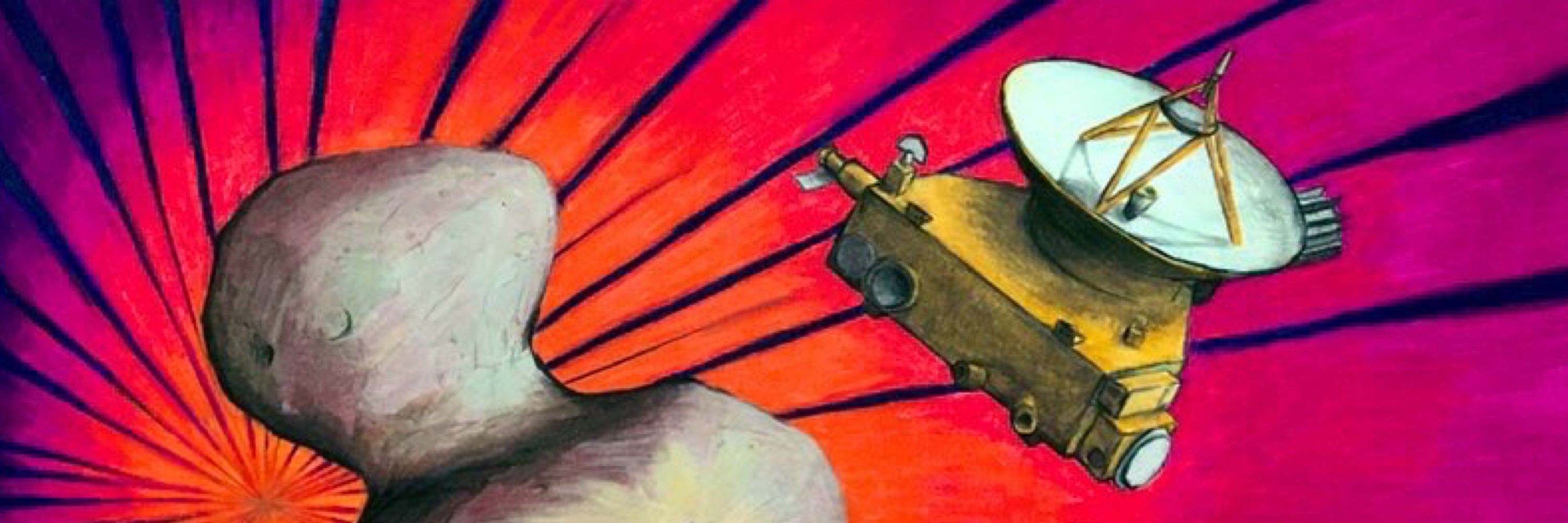
The Planetary Science and Astrobiology Decadal Survey, Origins Worlds and Life, is now fully available WITH figures! nap.nationalacademies.org/read/26522/c...
For All Mankind season 4 trailer dropped—and it looks like they’re ready for NASA’s “asteroid autumn.” What can go wrong with mining a rubble pile asteroid? 😬 #ForAllMankind#AsteroidAutumn
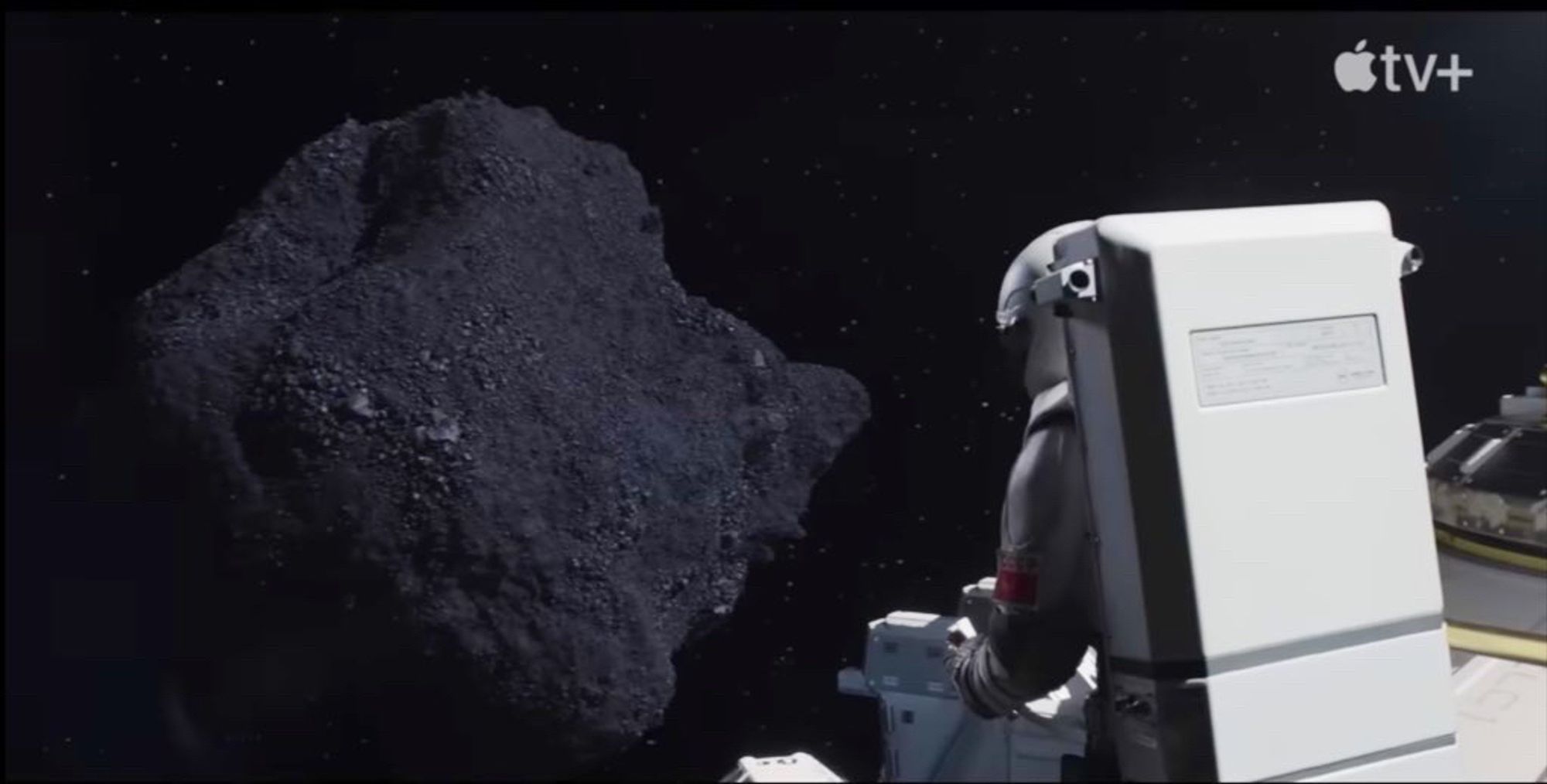
What doesn’t come across in that first photo (and because I can’t post videos here) is that the gel pens are sparkly ✨🛰️✨
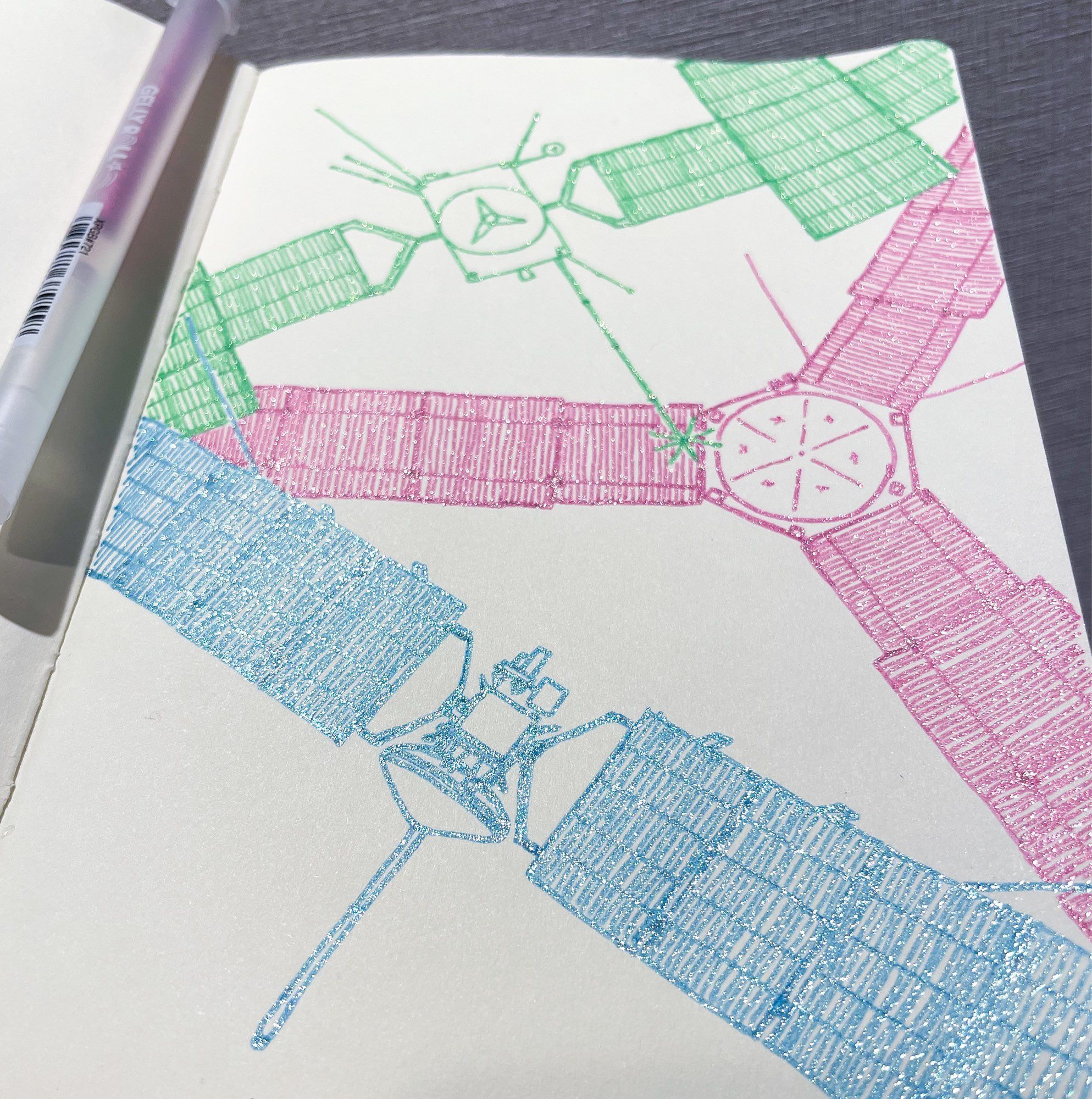
The Juno open science team meeting is giving me an opportunity to play with some new tools… like my sparkly gel pens, and rainbow pencil. ✨🛰️🌈✨

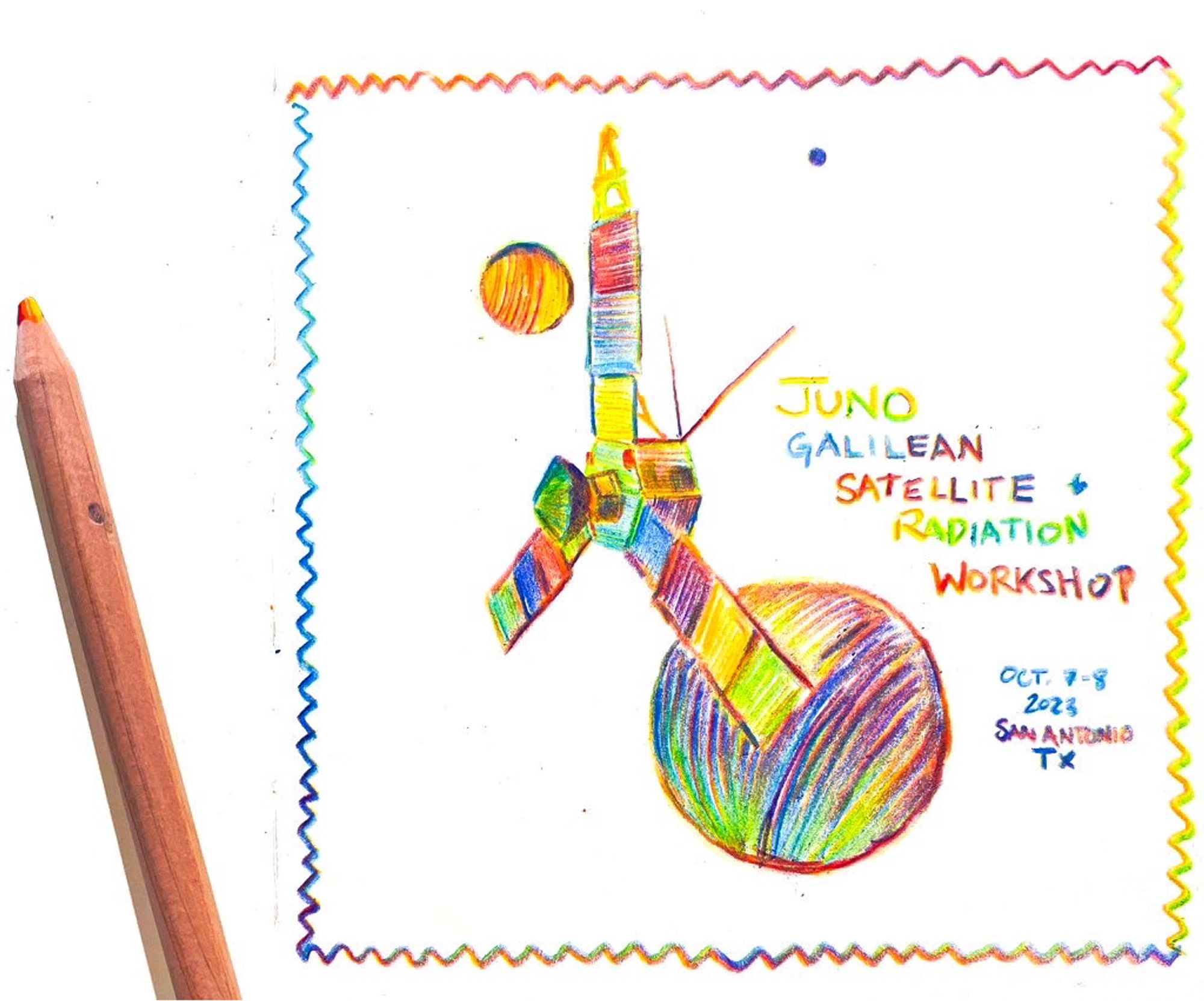
Rutu Parekh—Europa’s young surface exhibits some dramatic mass wasting, including slides/flows, and even large displaced boulders. These will be interesting places for @EuropaClipper to look at to better understand active processes! #DPSEPSC2023
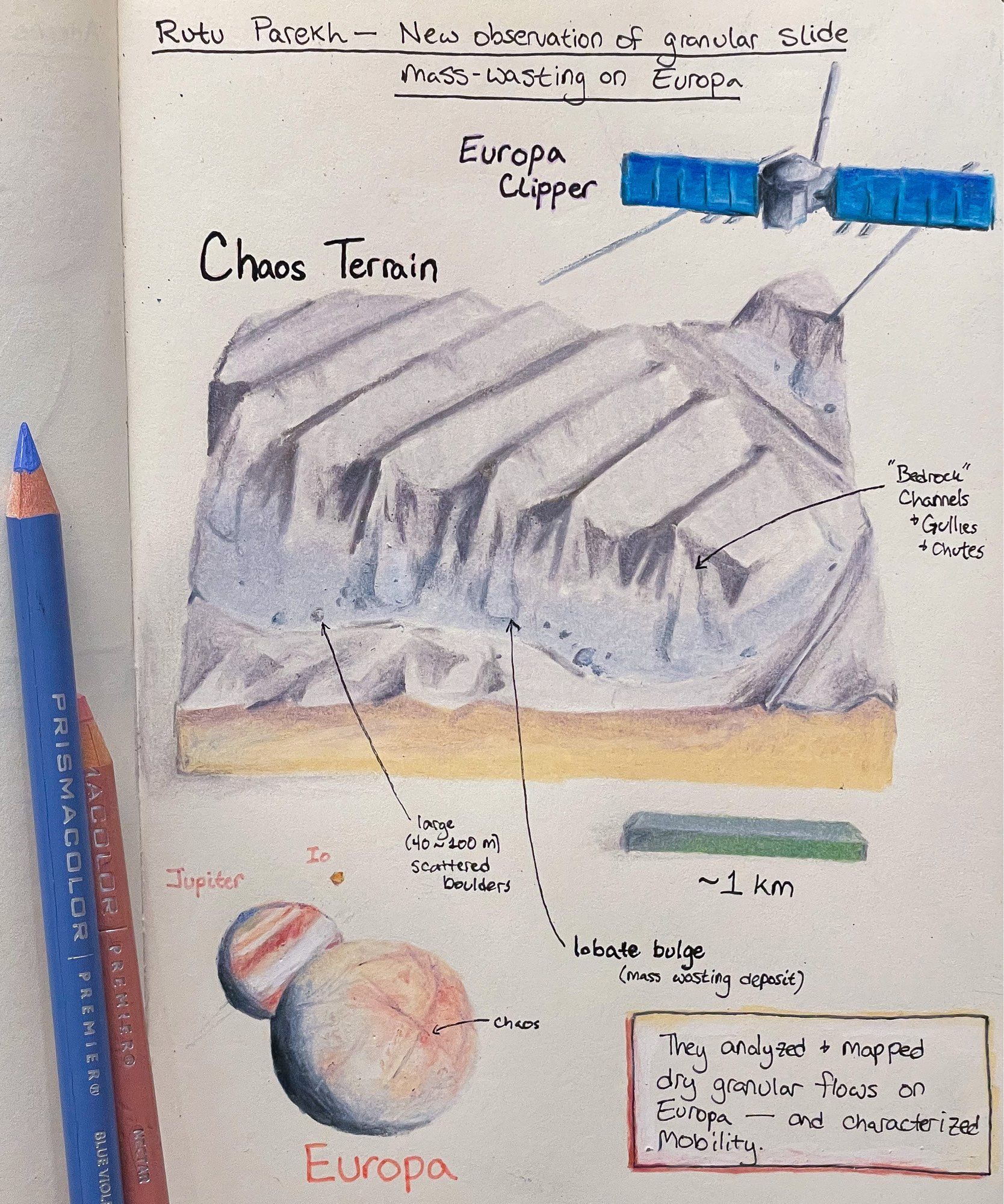
Adeene Denton @spacewhalerider.bsky.social —Pluto’s large moon, Charon, likely formed from a giant impact. New models that include strength of the bodies suggest this may have been more of a “kiss and run” impact, and not as catastrophic as previously thought. #DPSEPSC2023

Alex Berne—Enceladus’s plume output is correlated with the amount of predicted strike-slip motion along the Tiger Stripes. There might be little “pull-aparts” becoming bigger/smaller over the tidal cycle, modulating these eruptions. #DPSEPSC2023
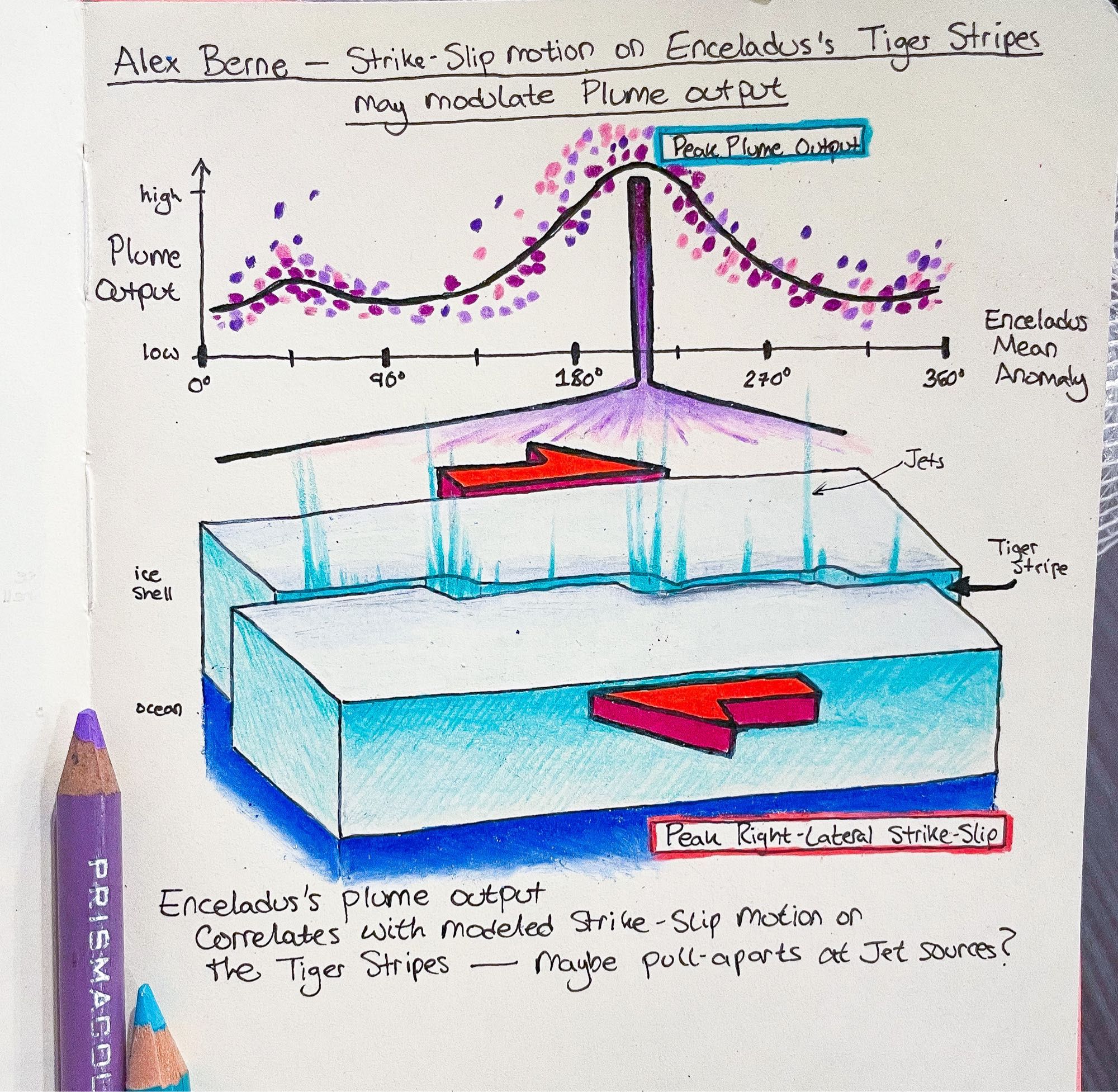
Erin Leonard—Most models of Enceladus’s geysers use simple subsurface structures. However, Earth shows us that subsurface magmatic/fluid systems can be very complex. They’re adapting a model developed by the oil/gas industry to explore Enceladus! #DPSEPSC2023
